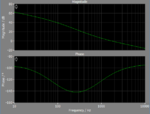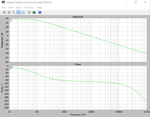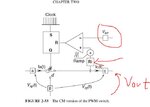tarikelec
Member level 2
What are the best software to simulate a boost converter with current control ?
hello everyone,
I have designed a boost converter with peak current mode control and I wanted to evaluate the transfer function in bode plot of the Verr to Vout as you can see in the files added the boost converter gives a bode plot without a DC gain meanwhile in the figure added you can see the DC gain when I use the math transfer function and use Matlab to get the bode plot.
I would love to know what I have missed getting the DC gain as the shape of the bode plot is good.?
thank you
hello everyone,
I have designed a boost converter with peak current mode control and I wanted to evaluate the transfer function in bode plot of the Verr to Vout as you can see in the files added the boost converter gives a bode plot without a DC gain meanwhile in the figure added you can see the DC gain when I use the math transfer function and use Matlab to get the bode plot.
I would love to know what I have missed getting the DC gain as the shape of the bode plot is good.?
thank you








